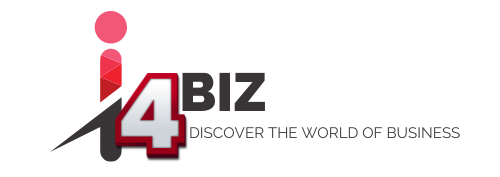The diversity of software development tools and languages offers the potential to find a perfect match for any project’s needs. However, it also introduces the challenge of navigating through a lot of options to identify that match. The decision on how to choose the right programming language becomes a strategic choice vital to a project’s triumph.
To do this, you need to understand how closely a language’s capabilities align with the project requirements. Does the language support the scalability your application needs? Can its performance meet your software’s demands? How supportive is the programming community around it?
The answers to these and similar questions hold the key to selecting a programming language for custom web development that fits your current scope and accommodates future growth and evolution.
Understanding Project Requirements

The success of your software development journey hinges on this clarity. Consider your project’s scope as the blueprint: What are you building, and what will it accomplish? The scope not only guides you but also prevents the drift away from your initial goals.
Target platform(s) play an important role in narrowing down your language choices. Whether you’re developing for web, mobile, desktop, or cross-platform, some languages naturally align better with certain environments. This alignment can notably affect both the project’s execution and its final quality.
High-performance programming becomes a priority for software that demands speed and efficiency, while scalability is vital for applications expected to grow or handle increasing loads over time. The choice of language can either expand your project or become a bottleneck for future growth.
Moreover, the practical considerations of development time and budget are very important. Some languages allow rapid development but may incur higher costs in the long run, either through maintenance or scalability issues. Conversely, languages that may require a steeper learning curve or longer development time could offer greater efficiency and lower costs down the line.
In essence, identifying your project needs precedes selecting a programming language. It requires balancing technical requirements and practical considerations, making sure that your chosen language is capable of carrying your project to its successful completion.
Analyzing the Language Ecosystem

When choosing the right programming language for your project, the ecosystem surrounding it often becomes very important. This ecosystem, rich with libraries, frameworks, and community support, can speed up development and influence the project’s path towards success.
Libraries and frameworks are like the building blocks and tools at a developer’s disposal, offering pre-written code for common tasks and challenges. Choosing a language with a great set of these resources means not having to reinvent the wheel.
It enables developers to focus on crafting unique features rather than getting bogged down by the basics. Whether it’s handling database operations, managing user interfaces, or integrating with external services, these resources are invaluable for accelerating development.
Equally important is the language’s community support. From forums and discussion boards to conferences and meetups, you have the opportunity to learn from experienced developers.
Community-driven resources, such as documentation, tutorials, and open-source projects, provide real-world insights and best practices that can guide your project toward success. Furthermore, a supportive community means having a safety net for troubleshooting and problem-solving.
Performance and Scalability

In software development, performance and scalability are critical pillars that uphold a project’s long-term viability and success.
The debate between compiled and interpreted languages often takes center stage when discussing performance. Compiled languages, which are transformed into machine code before execution, generally offer faster runtimes and more efficient resource utilization.
This can be particularly advantageous for applications that require high-speed operations and minimal latency. On the other hand, interpreted languages are translated on the fly, which offers flexibility and ease of debugging at the cost of speed. The choice between these paradigms is based on the specific performance demands of your project and the trade-offs you are willing to make.
Scalability, the ability of a system to gracefully handle growth, is another facet where programming languages show their true colors. Some languages are designed with scalability in mind, offering features like efficient memory management, concurrency support, and robust error-handling mechanisms.
They include Go (Golang), Erlang, Scala, and Rust. These attributes make them suitable candidates for large-scale applications expected to serve an expanding user base or handle vast amounts of data.
However, it’s not just about the language itself; the ecosystem plays an important role, too. Languages backed by extensive libraries and frameworks that can significantly ease the process of scaling an application include Python, Java, JavaScript, and .NET languages (such as C#).
They provide tried-and-tested solutions to common scalability challenges, such as load balancing and distributed computing, allowing developers to focus on scaling their applications rather than solving peripheral problems.
Ease of Learning and Availability of Developers

The two factors that significantly influence the journey are the ease of learning the chosen programming language and the availability of skilled developers. These elements make sure that your team can not only adapt and grow with the project but also expand when new talents are required.
Evaluating a programming language’s learning curve about your team’s current expertise is like assessing whether your crew is ready to navigate the waters they’re about to enter. For instance, Python is well known for its readability and simplicity, which make it an attractive option for teams looking for a quick start or to integrate new members with diverse backgrounds.
On the other hand, languages like C++ or Rust, while powerful, are harder to learn due to their complex syntax and sophisticated memory management features, requiring a solid foundation in programming concepts.
Languages like JavaScript and Java have large communities of developers, which makes it easier to find experienced personnel. This abundance also often means a lot of community-driven resources and support that help in the onboarding process and continuous learning.
On the other side, niche or newer languages, while potentially offering cutting-edge features, may pose recruitment challenges due to a smaller pool of available talent. For instance, finding experts in a specialized language like Elixir might be more time-consuming and costly despite its growing popularity for certain types of projects.
Long-term Viability and Community Support

The long-term viability of a programming language and the strength of its community support are crucial factors that can influence the sustained success and growth of your project.
Without active development, a programming language can quickly become obsolete, which would make it difficult to keep your project updated or secure. Moreover, dwindling community support can leave you stranded when you encounter bugs or need to implement new features.
On the brighter side, languages like Java and Python are examples of long-term viability and robust community support. Java, with its widespread use in enterprise environments, benefits from a massive ecosystem and a steadfast commitment to backward compatibility.
So, projects developed in Java remain maintainable and relevant. Python’s simplicity and versatility have created a diverse and active community, making it a go-to language for everything from web development to data science.
JavaScript also deserves mention for its presence across the web and its ecosystem. The language’s evolution, driven by an active community and innovations like Node.js, has secured its place within modern web development, providing reassurance of its long-term relevance.
Case Studies ─ Success Stories and Lessons Learned

Through real-world examples, we can gain insights into the role that the choice of a programming language plays in the destiny of projects and companies.
- Dropbox’s Migration to Python ─ Dropbox is an example of using the right language to scale and innovate. Initially built in Python for its simplicity and rapid development capabilities, Dropbox benefitted from Python’s extensive libraries and community support. As the user base skyrocketed, Python’s flexibility facilitated the scaling of their backend systems and the introduction of new features, demonstrating Python’s capability to support large-scale, consumer-facing applications.
- Twitter’s shift from Ruby to Scala ─ Twitter’s journey highlights the importance of matching language capabilities with scalability needs. Initially built with Ruby on Rails for its development speed, Twitter faced scalability challenges as it grew. The transition to Scala, a language designed for concurrency and scalability, allowed Twitter to handle massive volumes of tweets and user interactions efficiently. This shift addressed performance issues and also showcased Scala’s suitability for building robust, high-traffic web applications.
- WhatsApp’s use of Erlang ─ WhatsApp provides a compelling case for choosing a less mainstream language for its unique advantages. Choosing Erlang, a language known for its fault tolerance and support for concurrent connections, WhatsApp was able to support an enormous number of simultaneous connections with minimal hardware. Erlang’s design principles were perfectly aligned with WhatsApp’s need for reliability and scalability, which demonstrated the strategic advantage of selecting a language based on project-specific requirements.
Conclusion
Understanding your project’s scope, performance needs, and scalability potential, alongside practical considerations like the development team’s expertise and the availability of skilled developers, frames the decision-making process.
The ecosystem that surrounds a language, including libraries, frameworks, and community support, further defines its suitability for your project. Moreover, real-world case studies have illustrated the tangible impact of these choices on the success of projects across various domains.
As you weigh the options, remember that the decision is more than a technical one. It’s a strategic move that requires a holistic view of your project’s ambitions, challenges, and future.
